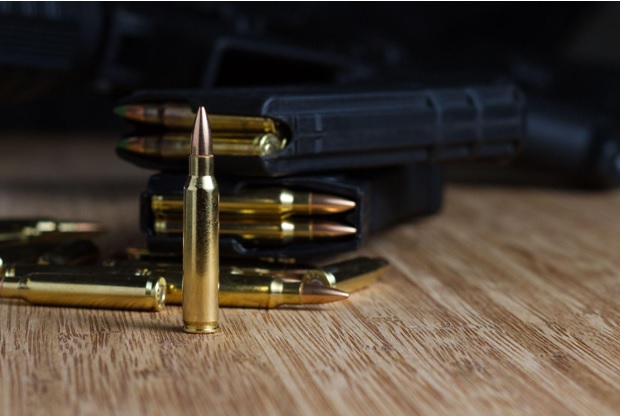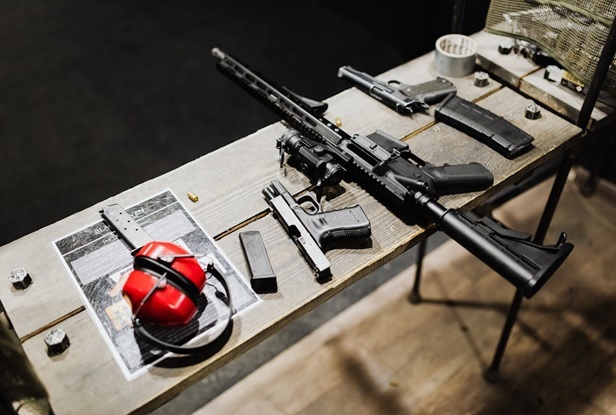So you’re looking at AR15 complete uppers to save you time on your next build. Naturally you’re considering things like barrel alloy composition, barrel length, gas system length, the coating of the BCG, the type of muzzle device installed, and the rail system, especially if you’re looking at a barreled upper, right? You also might consider bolt carrier group coatings, buffer weight, too, along with the other parts included with a complete upper receiver.
But are you giving any thought to the barrel’s rate of twist? It is this, as much as barrel length, that will determine not only accuracy but consistency.
It is also something that is far too often overlooked, especially when things like barrel length, composition, and finish are all in play in an AR upper.
Let’s take a step back and get to the bottom of why twist rates are so important.
What Is Barrel Twist Rate and Why Does It Matter?
As simply as possible, twist rate is a metric that illustrates how far through the barrel a projectile will have to travel before it completes one full revolution around its axis.
That is, how many inches through the barrel will a bullet have to travel to spin one time. At its most basic, this is what twist rate is, and so it is conveyed as a ratio - say, 1:10.
That is to say, if you have a barrel with a 1:10 twist rate, a bullet would have to travel 10 inches forward through the barrel to complete one full “spin.”
The reason this is so critical is that the rate of twist must be matched closely to the bullet’s size, weight and speed, which two things are impacted by caliber and the rate of propellant deflagration. If the rate of twist is too low, the bullet will yaw, which will cause it to veer, adversely impacting accuracy.
On the flipside, rate of twist can’t be too high, either, as the bullet’s spin stability will also be adversely affected. This problem mostly affects lighter bullets, though.
a
As a general rule, heavier and longer bullets tend to need a faster twist rate to ensure proper spin stability, to prevent issues with accuracy. Conversely, lighter bullets can often get by with a slower twist rate.
It is also important to note that there is no single twist rate that is suitable for a given caliber, and that multiple twist rates might offer good performance for a single cartridge, as propellant charge and barrel length can affect speed, which in turn impacts the suitability of a given twist rate.
So the next thing we need to do is look at this with respect to the specific calibers that are common with AR 15 builds.
By Caliber
Since 5.56 is arguably the most common caliber around which AR15 style rifles are built, this is the first one we will look at. The three most common twist rates for AR15 rifles chambered in 5.56 are 1:7, 1:8, and 1:9.
If you’re building with a 5.56 upper, these are the twist rates you need to sift through, and here’s what you need to know.
A barrel with a 1:7 twist rate is very common among 5.56 uppers, and in fact is the twist rate used by the military in several rifles, such as M4 carbines. It’s a fast rate of twist, and so it is suitable for bullets up to 90 grains or so. It performs well with lighter 5.56 bullets, especially those in the 70 grain class.

Barrels with a 1:8 rate of twist are also very versatile and considered suitable for use with bullets up to 80 grains or so. It is also a popular twist rate for 5.56 uppers with carbine-length barrels.
This brings up to barrels with 1:9 twist rates, which is considered better for heavier bullets. At the same time, it is not considered problematic or too fast for lighter bullets, so if you have a 5.56 and shoot 55 or 62 grain bullets, both of which are exceedingly common, this rate of twist will perform well.
There are other rates of twist for 5.56 uppers, although most of them are far less common than the main three described here. These are 1:10, 1:12, and 1:14, all three of which are generally considered better for lighter bullets, especially in longer barrels.
Now, if we’re going to cover rate of twist with respect to several other popular calibers, we need to take a few steps back.
Let’s look at 7.62x39 uppers for a moment. This is both a heavier bullet and a slower one than most 5.56 loads. Both 1:9 and 1:10 twist rates generally deliver suitable performance with this caliber, especially at somewhat closer ranges.
Consider another caliber like .350 Legend. If you are building with a .350 Legend upper, it’s important to note that these cartridges produce slower muzzle velocities and use much heavier bullets than 5.56. Consequently, barrels with much slower twist rates generally produce good performance. You will see uppers with barrels that have 1:16 twist rates for this caliber.
Like the last two cartridges mentioned, .308 Winchester is loaded with heavier bullets and usually produces slightly lower muzzle velocities. As such, barrels for .308 generally have slightly slower twist rates, such as 1:10 and 1:14 - although ranges are much wider than this.
Another common caliber is .300 Blackout, which offers performance somewhere between .308 and 5.56. It also fires a heavier, slower bullet, so twist rates vary, especially since this caliber performs best at closer ranges. You will find .300 Black uppers with 1:7 through 1:10 twist rates, with some even slower.
It is important to keep in mind that no single rate of twist will offer the best performance all the time, and that you should also consider load data, including bullet weight and muzzle velocity, as well as barrel length, when you are looking at AR15 complete uppers.
Starting with an AR15 Complete Upper

Getting ready to build your next rifle with an AR15 complete upper? Armed with this information you should be able to pick out an upper with a barrel that has the ideal rate of twist to deliver uncompromising accuracy. Get started here and contact us at Sales@MCSGearup.com if you have any questions before starting.

